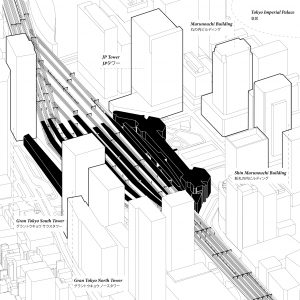Spaces associated with transport and mobility are among those undergoing the most rapid transformations, responsive both to technological development and to social, economic, and cultural change, which manifest globally at different rhythms and in diverse forms. Spaces of movement in motion, where the pursuit of progress and efficiency coexists with contradictions and tensions: while awareness of the environmental impact of air travel is growing, the total number of passengers continues to rise; although many cities remain dominated by private vehicles (Italy still holds the European record for the highest number of cars per capita) infrastructures for soft mobility are slowly making their way into urban fabrics originally conceived without them; meanwhile, large railway areas in transformation leave behind spaces of opportunity for cities, which, however, often fall prey to speculative dynamics.
This tension, this ferment, reflects the crucial role of mobility spaces within the built environment: not only intermodal junctions of traffic and movement but also places of encounter between different worldviews, values, and positions that resonate with or conflict against one another.
Mobility spaces are places of great diversity, capable of bringing into contact different individuals and groups, united by the shared need to move. Many of them were once defined “non-lieux”, but their transitory nature allows them to function sometimes as spaces of hospitality, accommodating people or collective activities without necessarily imposing consumption. At the same time, however, the transport system has historically reproduced logics of class-based discrimination, which persist today both in the quality of services and in their accessibility, generating dynamics of exclusion. On another hand, spaces and infrastructures of mobility exert a significant impact on the city but, thanks to their capillary diffusion, can play a strategic role in their livability, by supporting, for example, green corridors and thus contributing positively and inclusively to urban health and quality.
Whenever the functionalist logic of movement infrastructure—designed to transport people and goods from point A to point B—is set aside, and the gaze extends beyond the narrow focus on speed and efficiency, mobility and infrastructural space reveal multiple layers of interpretation. These often emerge from post-occupancy dynamics, from spontaneous uses that arise outside the plan, slipping through the mesh of functionalist planning. Mobility spaces therefore emerge as spaces of transition between past, present, and future, but also opportunities to design in the city and outside potential hubs capable of driving the transformation of the built environment toward greater justice, sustainability, and inclusion.
The contributions gathered in this session explore the potential of mobility spaces to establish themselves as high-quality public spaces, capable of providing services, fostering social interaction, generating identity value, and constituting a shared common good.
Bibliography
- CJ Lim, Inhabitable Infrastructures. Science fiction or urban future?, Routledge, London 2017.
- Various Authors, Highway Design, Syllabus 01, supplement to Fuoco Amico, June 2021.
- Marc Verheijen, Infratecture. Infrastructure by Design, nai010, Rotterdam 2015.



